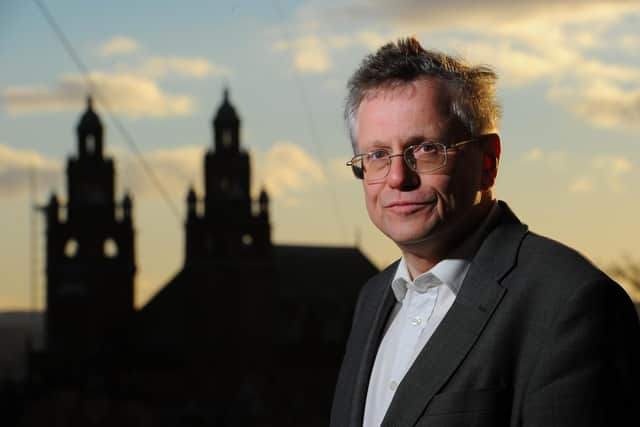Murray Pittock: The British Army and the 'long shadow' cast by Culloden


Most people with an interest in the Jacobites will be aware of the atrocities carried out after the battle of Culloden. But there is a much longer story, and one which has never been told: and that is the story of the British Army in Scotland in the years that followed 1746.
The British government had been badly shaken by the Jacobite Rising, and this fear was reflected in the vicious statements made by some of its officers. Cumberland was given to musing as early as February 1746 on how ‘Speedy Punishment’ might be visited on ‘the greatest Part of the Common People’ without recourse to lengthy and uncertain legal procedures.
Advertisement
Hide AdAdvertisement
Hide Ad

Others agreed: General Bland gave an extermination order as late as 22 May, and in 1747 was still calling on the British Government to be ‘ridd of all Chiefs of Clans’ and their ‘Barbarous Language’. Even the more sympathetic Duncan Forbes of Culloden favoured mass transportation. The West Indies with their high mortality rates were the usual choice.
Many other officers followed the lead given by their commanders (in Bland’s case, in direct contradiction to the army regulations he had himself authored). The deployment of death squads at Culloden (enshrined in the ‘licence to kill’ in the Army Orders of the Day for 17 April) helped to lead to only 154 prisoners being taken from the Scottish regiments.
Dozens were killed by firing squad that day and thirty-two were burnt alive. John Fraser, an officer in Lovat’s, claimed that he was taken wounded on a cart to a place where muskets were fired at 2-3 metres range into captured Jacobites, with the survivors being clubbed to death with the butts. Seriously wounded and minus an eye, Fraser nonetheless survived. An officer in the Royal Scots, disgusted by the carnage, gave evidence to The Scots Magazine.
Culloden was however only the beginning of a large-scale British Army occupation, which at one time or another occupied some 400 garrison posts in Scotland. From the beginning this was not a ‘Highland’ story but a national one.
By the end of April 1746, there were British forces in place from Banff to Stirling. There are a number of military and naval operations which are almost unknown, such as the liberation of Orkney from Jacobite control in late spring. Morven and Lochaber suffered clearance and there were multiple acts of cruelty, such as the drowning of Jacobites surrendering at Fort William in expectation of government immunity on 2 June. So expected was government brutality that locals who wished to resort to banditry on occasion dressed as Argyll Militiamen. In their turn, disbanded Argyll militia threatened to join the Jacobites.
Scotland was divided into four military divisions in late summer 1746: the north, the north-east (Strathspey to Dundee), south central (Great Glen to Perth) and south (Scotland from Stirling southwards). Six regiments were in the south, four in the north east and four centrally, with further troops in the north. The British Army maintained deployments in such Highland strongholds as Ayr, Cupar, Dalkeith, Dumfermline, Dumfries, Dundee, Glasgow, Haddington, Kelso, Linlithgow, Montrose, Perth, Stirling, Stonehaven and Stranraer.
In late 1746, there were 20 infantry battalions and five dragoon regiments at 71 locations across the country. Cumberland and his commanders acted deliberately to move troops about every three months or so, ‘to prevent Connections which may happen by their Staying too long in a place particularly Scotland’, and also favoured concentrations of troops which could provide a sense of ‘Awe’.
The occupation-there were still 60 regular patrols in Scotland as late as 1756-saw the building of Fort George and an as yet unexplored effect of the presence of military forces-mostly not from
Advertisement
Hide AdAdvertisement
Hide AdScotland- across the country’s towns and cities for many years. It is not a simple story, nor one of unalloyed brutality. It is likely for example that cricket in Scotland originated as a British Army ‘garrison game’ at Perth and elsewhere, becoming fashionable among Scots gentry by the 1770s.
Cumberland’s demand for a total change in the constitution as regards Scotland was not supported by the government. The Duke’s plans were in the end to bear fruit in a different place, when British forces expelled over 80% of the 14000 French settlers in Nova Scotia, New Brunswick and Prince Edward Island in 1755. As the Duke himself said, he looked forward to the French being ‘drove out’ as he had once hoped to do in Lochaber. Culloden cast a long shadow.